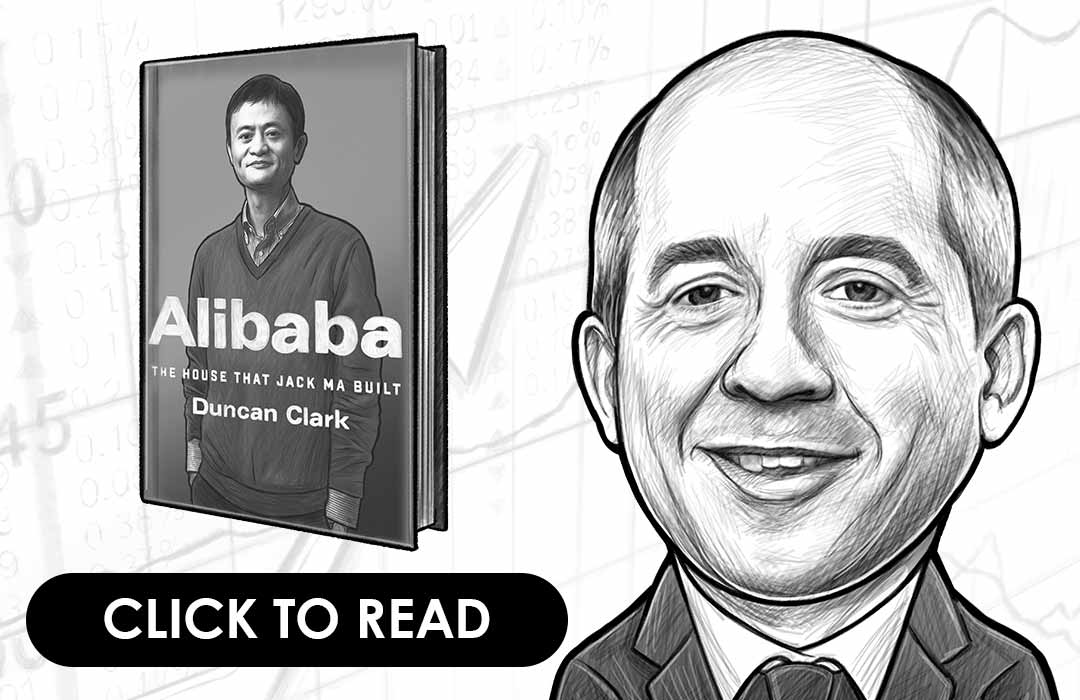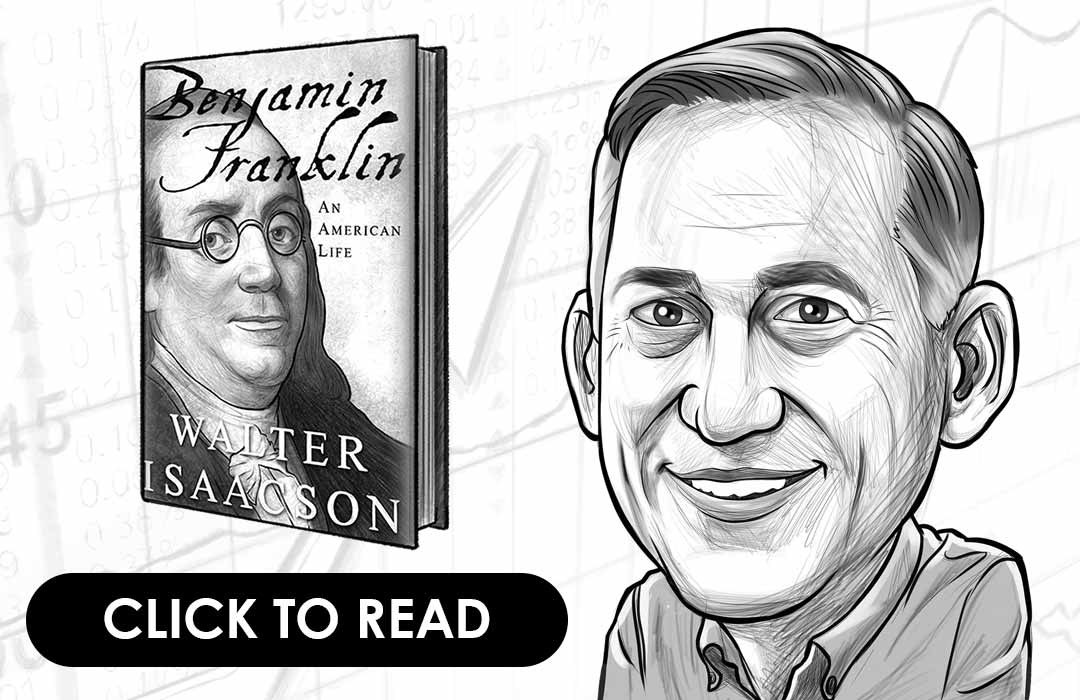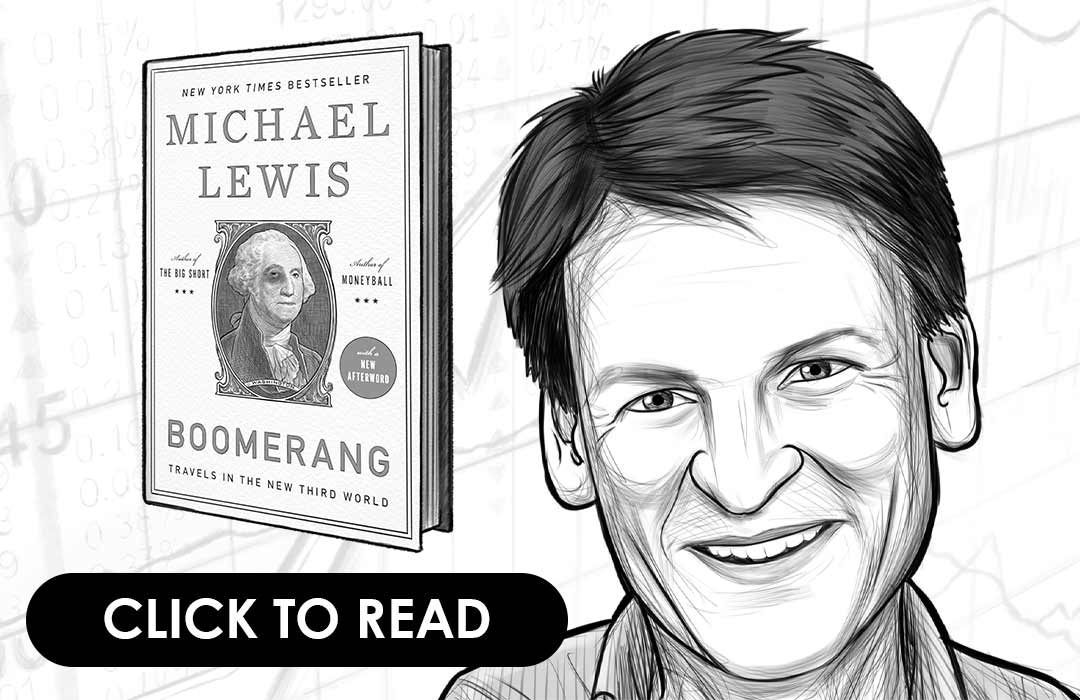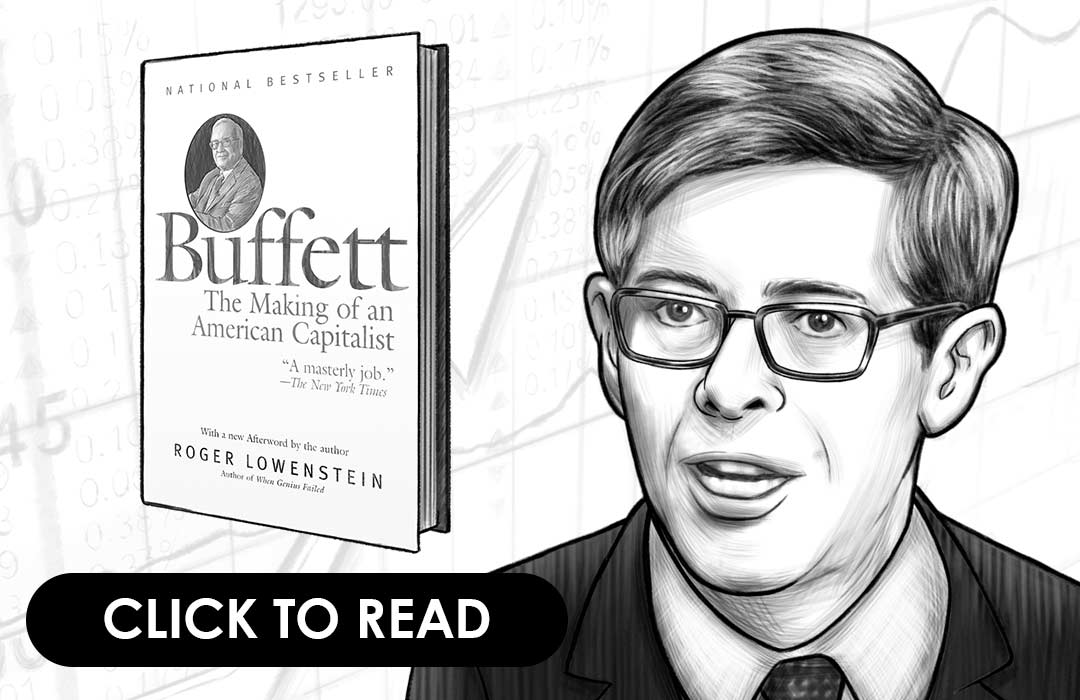An Executive Summary Of Idea Man
A Memoir By The Co-Founder Of Microsoft By Paul Allen
WHO IS PAUL ALLEN?
Paul Gardner Allen, born on January 21, 1953, co‐founded Microsoft with Bill Gates. He is now regarded as the 40th wealthiest man in the world with an estimated net worth of $18.6 billion. Paul is also the CEO of Vulcan Inc. – a company that manages his philanthropic and business interests. He has invested in several areas including real estate, sports teams, media companies and much more. Read on to know more about Paul Allen and how he turned his ideas into reality in: Idea Man: A Memoir by the Co-founder of Microsoft.
PRESTON AND STIG’S GENERAL THOUGHTS ON IDEA MAN
What an eye opener this book was. It turns out that Microsoft from its very beginning was a true partnership, and Allen didn’t leave the company before it was well on its way to becoming the IT behemoth it is today. Paul Allen was the visionary and Bill Gates was the outstanding businessman. Together they created the IT version of Lennon and McCartney. Like Lennon and McCartney the partnership also had to stop because they started to slide away from each other privately as well as personally, and this book captures the painful transition.
The book is honest, well written, relevant, and inspirational for all entrepreneurs. Additionally, it’s really quite fun to read about all the first-hand accounts of building one of the most recognizable brands in the world today.
Understand the financial markets
in just a few minutes.
Get the daily email that makes understanding the financial markets
easy and enjoyable, for free.
CHAPTER 1: OPPORTUNITY
Paul Allen and Bill Gates – young, geeky boy filled with a restless energy to do something worthwhile – were fascinated when Paul read an article that announced the arrival of a new, personal computer named Altair. Paul had the idea of writing a BASIC language for computers for ages, but Bill hadn’t shown much enthusiasm. Although they hadn’t written even a single code, Bill called MITS and was told that they would get the contract if they succeeded.
CHAPTER 2: ROOTS
Paul’s parents – Kenneth Allen and Edna Gardner – had the ambitions to make it big, but they lacked opportunities. Edna read a lot, and Paul inherited her habit. Although he was only three years old, he was able to read on his own and couldn’t get enough of books about rockets and steam engines. He couldn’t understand everything, of course, but it was enough to satisfy his curiosity. Also, the fact that he was exposed to science at such a young age helped a lot.
CHAPTER 3: LAKESIDE
When Paul’s parents decided that he would join Lakeside – a very prestigious school – Paul resisted; however, he got in even when he had tried desperately to fail. He spent years learning more, and it was the most intellectual phase of his life. His love for technology also grew, and he constantly followed the progress of companies like Hewlett-Packard and Intel. At that point of time, as new players stepped into the market, he gained more experience more than others, thanks to a time‐sharing computer terminal. He also became friends with Bill Gates as they shared common interests.
CHAPTER 4: ACOLYTES
Paul discovered his passion for assembler programming, but his friend Bill was more interested in high‐level languages. Paul was fascinated with the way he could almost speak directly to the computer. Sometimes, he would even lose track of time as his entire focus was only in one direction. Paul and Bill practiced late hours, but their parents’ patience began to wane when they realized that a mere hobby was becoming an expensive affair. Desperate times called for desperate measures, so Bill and Paul decided to hack C-Cubed’s commercial account to tap into a free account. They were both thrown out of school immediately, but it didn’t dampen Paul’s spirits as he continued to use another free C-Cubed account just to learn more.
CHAPTER 5: WAZZU
Both Paul and Bill found more opportunities to pursue their passion in college at Washington State, or Wazzu, as Paul called it. After Kent’s untimely death in a mountaineering accident, Bill was devastated, but when they immersed themselves in a project that required coding in FORTRAN, Bill and Paul became closer to each other. They took up challenges that would be unimaginable to any other teenager and their passion for programming grew stronger. Incredibly, they also scraped enough money to buy a microprocessor – a device that was much smaller than the massive mainframes used in those days but with the same capacity as a regular computer.
CHAPTER 6: 2+2=4!
Bill urged Paul to move to Boston, and Paul decided that it would be perfect for him and his girlfriend, Rita, especially since he had also gotten a job at Honeywell. But, Bill changed his mind because of his family and left to Harvard. Despite that, Paul relocated to Boston and settled down as a programmer at Honeywell. He was good at his job, but was quickly bored, and was happier to use Bill’s Harvard account to explore new languages and ideas.
CHAPTER 7: MITS
After Paul visited MITS – a company founded by Ed Roberts – and showed Ed Roberts that their BASIC language could perform basic mathematical calculations on the Altair, he was stunned and also offered Paul a job. The company wasn’t anything like Honeywell that guaranteed a secure future, but Paul decided to take the risk. The plan was to load the Altair with the 8080 BASIC and sell them. Before long, they had customers calling in with preorders. At this point of time, Paul and Allen were thrilled with their new client MITS, and also founded a company named Micro‐Soft to formalize the relationship.
CHAPTER 8: PARTNERS
Micro-Soft moved ahead at full speed, and Paul quit MITS to work full time. Bill also quit Harvard, and although both of them held equal partnership at the time, Bill persisted that he wanted a bigger share in the company. It was split to 60-40 share at the beginning, but after Bill had insisted that he had worked harder for it, they settled down to 64-36, with Bill getting the bigger share. Bill also had a clause in the contract that if they ever had differences as partners, then he could ask Paul to leave the company! It was a promising time for the youngsters, and Paul simply wanted to continue with the same pace, so he agreed to Bill’s demands.
CHAPTER 9: SOFTCARD
By 1979, Micro-Soft had finally arrived on the market. With a BASIC interpreter, the company had managed to go over a million dollars, but they didn’t even have the time to celebrate. Opportunities poured in, and Bill and Paul decided to visit Japan to expand. It was the time when consumer electronics dominated the market in Japan, and it was extremely competitive. In fact, Micro-Soft advanced at such speed that H. Ross Perot – a billionaire from Dallas – offered a seven-figure number to acquire the company, but they rejected him since they believed that they had better things destined for them.
CHAPTER 10: PROJECT CHESS
Big players like IBM also eyed the digital market, and they prepared a contract for software with Microsoft. IBM named it as Project Chess, and it was an extremely hush‐hush affair. Everybody acknowledged that software was an important factor for technology to progress, and Microsoft found itself at the right place at the right time. Bill and Paul were good friends, but like the early days, Bill rejected Paul’s ideas on several occasions. Paul always thought about the future, but Bill, being a pragmatist, didn’t agree at all times. Bill was the one who got things done, but Paul was the man who had the ideas before anyone imagined them.
Understand the financial markets
in just a few minutes.
Get the daily email that makes understanding the financial markets
easy and enjoyable, for free.
CHAPTER 11: BORROWED TIME
Microsoft was confident about its hold on languages, but times were changing, and it was apparent that their MS‐DOS was making more money than all their languages combined. The MS‐DOS was a perfect companion for IBM and customers were more comfortable with this setup than anything else. Other competitors like Commodore 64, Atari ST and TRS‐80 vanished because of their inferior software and hardware. The IBM PC sales exploded, and Apple remained the only competitor. With IBM serving as Microsoft’s lifeblood, there were many heated interactions in the company, but as Paul’s role diminished in the company and he couldn’t handle Bill’s angry tirades anymore, their relationship was strained, and both of them were aware of it.
CHAPTER 12: WAKE-UP CALL
In 1982, Paul was diagnosed with lymphoma, and he was shattered with the realization that his days were numbered; however, the doctors later told him that he would recover since it was the Hodgkin’s disease, which had a better survival rate. Things weren’t great for Paul, but he felt the biggest blow when he overheard Bill and Steve Ballmer’s conversation about buying his stock. Paul refused to sell and even after Bill’s counterarguments and apology, he decided not to go back to Microsoft. After receiving treatment, Paul began to heal, but he also understood that the tensions at Microsoft weren’t worth it, especially after he had such a close brush with death.
CHAPTER 13: HELLHOUNDS
By the 90s, Microsoft had become the biggest and richest software company in the world. Bill had grown along the same lines, and it was no surprise that he too had become the richest man in the world. Paul had rejoined Microsoft as a board member, but he also had founded a company named Asymetrix. The company grew rapidly; however, trouble came knocking when the Justice Department sued them for several violations. Bill had a tough job, and although he had hammered it in for years, it was too much even for him to handle. Therefore, he stepped aside – a move totally unexpected – and let Steve Ballmer succeed him as the CEO.
CHAPTER 14: BLAZERMANIA
Paul Allen became a millionaire when Microsoft offered its IPO. Later, by 1990, he sold more of his stocks and became a billionaire. So, he decided that life was too short to waste, and invested in something he’d wanted to do all along – an NBA team named the Portland Blazers. NBA had become an escape for Paul back when he was sick, and naturally, he was excited to become the youngest owner of a sports team. However, Paul’s close relationship with a player affected his judgment, and the team suffered.
CHAPTER 15: 12TH MAN
Paul lost more than he’d invested – $65 million – in basketball but that didn’t stop him from investing in football. He didn’t know much about the game and wasn’t as excited to purchase a team as he was with the Blazers, but he simply couldn’t see the team die slowly because of an incompetent owner. This time, however, his experience dictated that sports teams cost a lot, and he put his foot down even when people pressurized him to bear the price of the team alone. He did purchase the team and was lauded as a hero for saving the Seahawks from going out of town.
CHAPTER 16: SPACE
Paul had always shown an interest in science fiction. Even when he was young, everything from Yuri Gagarin – the first man ever in space – to movies about space travel enchanted him. When his teacher noticed him squinting, his parents got his eyes tested, and although the results were disastrous, it didn’t take young Paul away from reading anything and everything about space. As his love for space travel grew even when he became an adult, he formed a company named MAV – Mojave Aerospace Ventures – with Burt Rutan, the president of an aerospace company named Scaled Composites.
CHAPTER 17: JIMI
Paul Allen grew up surrounded by music. He idolized Jimi Hendrix and couldn’t get enough of his songs. When his mother gifted him an electric guitar, he was thrilled and also taught himself to play! His obsession with Jimi went up a notch when he attended a live concert, and although he couldn’t even see Jimi, Paul couldn’t get his mind off the music.
CHAPTER 18: WIRED WORLD
Paul was so impressed with SkyPix – a cable TV company – that he invested $10 million in the business without any contemplation. Within a year, SkyPix declared bankruptcy, but Paul knew that it was erroneous to underestimate new platforms that quickly changed things. He also believed that since people began using personal computers, it was natural for them to be wired together. It was 1992 where applications were just beginning to pop up, and PCs were seen as pocket calculators, but Paul knew that there would be a day where humans could use computers to do much, much more than simply performing mathematical calculations.
CHAPTER 19: FAT PIPE
People are on the move every day, whether it’s to their office or home, and it’s amazing if the Internet can travel along with them. Paul had the same thought. With this idea in mind, he bought shares in Metricom – an Internet data provider for mobiles. Business was good in the beginning, but since the company tried to expand too quickly, they fell flat and filed for bankruptcy in 2001. But, Paul’s intuition was right. Just a year later, BlackBerry smartphones took the market by a storm.
CHAPTER 20: SEARCHING
When Carl Sagan contacted Paul to rescue SETI – Search for Extra-Terrestrial Intelligence – Paul, Bill Hewlett, Gordon Moore and David Packard gave $1 million to keep the mission running. The federal government was funding the agency through NASA, but a ten-year mission to look at neighboring stars didn’t seem appealing to Congress, and they backed out. SETI may not have answered all the questions today, and it does seem like a long shot, but we might just be able to know if life exists in any of our neighboring stars and galaxies.
CHAPTER 21: MAPPING THE BRAIN
When Paul’s mother was diagnosed with Alzheimer, he was determined to do everything he could to save others from the same plight. The human brain is complex, and it can take at least half a century to map it, but Paul held a conference with 21 scientists to see if it was possible. Paul also realized that a research center was essential to help things progress, and thus the Allen Institute for Brain Science was born with his contribution of a whopping $100 million.
Understand the financial markets
in just a few minutes.
Get the daily email that makes understanding the financial markets
easy and enjoyable, for free.
CHAPTER 22: ADVENTURE
Paul was never an adventurer as a kid, but when he was diagnosed with a life‐threatening illness at 29 years, his perspective on life changed. He traveled to Alaska with his family and had the time of his life. After that, there was no stopping him, and he bought Charade – a 150 feet long yacht. Paul’s love for diving grew so much that he even hired people to build him Octopus – 414 feet long yacht, which was longer than an average football field!







